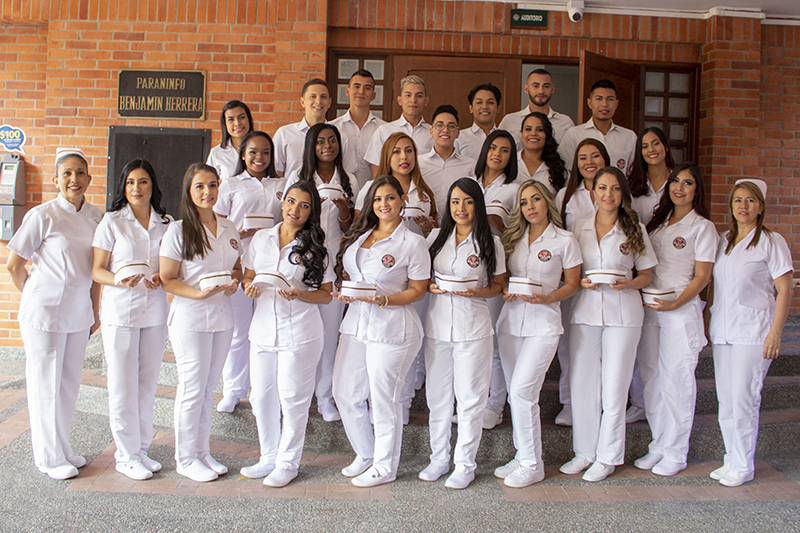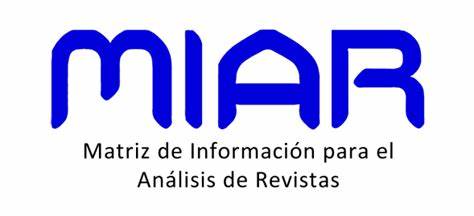Analysis of nursing programme completion rates in a southwestern Colombian university
DOI:
https://doi.org/10.54502/msuceva.v3n1a7Palabras clave:
Education, education professional, nursing, nursing student, graduateResumen
The aim of this research was to determine the graduation rate of a nursing programme and to explore the factors that contribute to or hinder the successful completion of the programme. The research adopted a descriptive approach, using a sample of students enrolled in and graduating from a nursing programme at a university in the southwestern region of Colombia, from 2012 to 2021. Data for the study were obtained from the university's academic records, meticulously organised and analysed using Microsoft Excel® spreadsheets. The analytical process involved extensive descriptive statistical analysis, including frequency tables, indices and proportions. The ethical considerations of the study were duly addressed, with formal approval from the Ethics Committee of the Faculty of Health, as documented in Law No. 05 of 22 April 2022. The cumulative graduation rate for the nursing programme for the period 2017 to 2021 was 37.9%. In addition, the study provided insights into the graduation rates for specific cohorts, with the following findings: for the cohort from 2012 to 2017, the rate was 18.2%; for the cohort from 2013 to 2018, the rate reached 32.3%; the cohort from 2014 to 2019 recorded a rate of 37.1%; similarly, the cohort from 2015 to 2020 recorded a rate of 40.5%, while the most recent cohort from 2016 to 2021 achieved a rate of 43.3%. Further examination of the data revealed that certain academic and socio-economic-personal factors significantly influenced successful completion of the programme. These included a strong affinity with the programme's "vocation of service to humanity" and crucial family support in a spiritual context. Looking at the cumulative and cohort-specific completion rates, it became clear that the attrition rate, which includes students who either partially or completely withdrew from the programme during their studies, was over 50%.
Descargas
Métricas
Citas
Starck PL, Love K, Pherson RMC. Calculating graduation rates. J Prof Nursing, 2008;24(4):197–204.
https://doi.org/10.1016/j.profnurs.2007.06.012 DOI: https://doi.org/10.1016/j.profnurs.2007.06.012
Casimiro N, Santos LA, Manuel L, Dias CL, Khan MA, Tostão E, et al. Decision-making in African universities demands rigorous data : Evidence from graduation rates at Eduardo Mondlane University in Mozambique. Int J Educ Dev. 2017;52:122–34. http://dx.doi.org/10.1016/j.ijedudev.2016.10.010 DOI: https://doi.org/10.1016/j.ijedudev.2016.10.010
Kruse JA, Litten JP, Kujawa J, Chatman N, Didion J. Project REACH : A multi-level , interdisciplinary approach to enhance student retention and success. J Prof Nurs. 2020;36(5):364–71. https://doi.org/10.1016/j.profnurs.2020.02.005 DOI: https://doi.org/10.1016/j.profnurs.2020.02.005
Schmidt HG, Cohen-Schotanus J, Arends LR. Impact of problem-based, active learning on graduation rates for 10 generations of Dutch medical students. Med Educ. 2009;43:211–8.
https://doi.org/10.1111/j.1365-2923.2008.03287.x DOI: https://doi.org/10.1111/j.1365-2923.2008.03287.x
Sikes DL, Patterson BJ, Chargualaf KA, Elliott B, Song H, Boyd J, et al. Predictors of student veterans progression and graduation in veteran to bachelor of science in nursing ( VBSN ) programs : A multisite study. J Prof Nurs. 2021;37(3):632–9. https://doi.org/10.1016/j.profnurs.2021.03.008 DOI: https://doi.org/10.1016/j.profnurs.2021.03.008
Hofwegen L Van, Eckfield M, Wambuguh O. Predicting nursing program success for veterans: Examining the importance of TEAS and pre-admit science GPA. J Prof Nurs. 2019;35(3):209–15.
https://doi.org/10.1016/j.profnurs.2018.11.002 DOI: https://doi.org/10.1016/j.profnurs.2018.11.002
Loftis C, Tapia B, Minorities S, Nwokolo V, Longoria K, Loftis C, et al. Examining the gap between medical school matriculation and graduation rates amongst self-identified minorities. J Natl Med Assoc. 2021;(January).
https://doi.org/10.1016/j.jnma.2020.11.007 DOI: https://doi.org/10.1016/j.jnma.2020.11.007
Lindley MK, Ashwill R, Cipher DJ, Mancini ME. Expanding capacity with an accelerated on-line BSN Program. J Prof Nurs. 2017;33(1):5–10.
https://doi.org/10.1016/j.profnurs.2016.03.010 DOI: https://doi.org/10.1016/j.profnurs.2016.03.010
Parada Rico DA, Correa Suárez LY, Cárdenas González YF. Factores relacionados con la permanencia estudiantil en programas de pregrado de una universidad pública. Investigación en Enfermería Imagen y Desarrollo. 2017;19(1):155–70. http://dx.doi.org/10.11144/%0AJaveriana.ie19-1.frpe DOI: https://doi.org/10.11144/Javeriana.ie19-1.frpe
Fanelli AG De. Políticas institucionales para mejorar la retención y la graduación en las universidades nacionales argentinas. Debate Univ. 2015;7:2–10. http://portalreviscien.uai.edu.ar/OjS/index.php/debate-universitario/article/view/331
Adrogué C, Garcia de Fanelli A. Gaps in persistence under open-access and tuition-free public higher education policies. Educ Policy Anal Arch. 2018;26(126):1–23. http://dx.doi.org/10.14507/epaa.26.3497 DOI: https://doi.org/10.14507/epaa.26.3497
Paabo M V, Brijmohan A, Klubi T, Evans-tokaryk T, Childs RA. Participation in peer-led supplemental instruction groups, academic performance and time to graduation. J Coll Student Retent Res Theory Pract. 2021;23(2):337–52.
https://doi.org/10.1177/1521025119826287 DOI: https://doi.org/10.1177/1521025119826287
Yue H, Fu X. Rethinking graduation and time to degree : a fresh perspective. Res High Educ. 2017;58(2):184–213. https://doi.org/10.1007/s11162-016-9420-4 DOI: https://doi.org/10.1007/s11162-016-9420-4
García de Fanelli, A; Adrogué, C; Abandono de los estudios universitarios: dimensión, factores asociados y desafíos para la política pública. Universidad de Sevilla. Facultad de Ciencias de la Educación; Revista Fuentes, 2015;85-106.
http://dx.doi.org/10.12795/revistafuentes.2015.i16.04 DOI: https://doi.org/10.12795/revistafuentes.2015.i16.04
Laskey, Marcia L., and Carole J. Hetzel. Investigating factors related to retention of at-risk college students. The Learning Assistance Review, 2011; 16,(1),31-43.
https://eric.ed.gov/?id=EJ919577
Chen, R. Institutional characteristics and college student dropout risks: a multilevel event history analysis. Res High Educ, 2012; 53, 487–505. https://doi.org/10.1007/s11162-011-9241-4 DOI: https://doi.org/10.1007/s11162-011-9241-4
Lockeman, K.S., & Pelco, L. The relationship between service-learning and degree completion. Michigan Journal of Community Service-Learning, 2013; 20(1), 18-30. https://files.eric.ed.gov/fulltext/EJ1047041.pdf.
Restrepo, A. Factores relacionados con la deserción estudiantil en el programa de enfermería de la Universidad Libre de Pereira. Cultura del Cuidado Enfermería. 2010;07(2):6–14. https://hdl.handle.net/10901/17559
Zhu, Lillian, Exploring the determinants of time-to-degree in public 4-year colleges, Paper presented at the Annual Forum of the Association for Institutional Research (AIR) (44th, Boston, MA, May 28-Jun 2, 2004).
https://eric.ed.gov/?id=ED491008
Mares G, Rocha H, Rivas O, Rueda E, Cabrera R, Tovar J. Medina L. Identificación de factores vinculados con la deserción y la trayectoria académica de los estudiantes de psicología en la FES Iztacala. Enseñanza e Investigación en Psicología. 2012;17(1):189-207.

Descargas
Publicado
Cómo citar
Número
Sección
Licencia
Derechos de autor 2023 Gaitan Gomez OL.; Gaitan Gomez CL.; Aristizabal P.; Ospina Uribe MC.

Esta obra está bajo una licencia internacional Creative Commons Atribución-NoComercial-SinDerivadas 4.0.
Magna Scientia UCEVA proporciona un acceso abierto, libre y gratuito a su contenido, basado en el principio de que ofrecer al público un acceso libre a las investigaciones, ayuda a un mayor intercambio global del conocimiento. Lo cual, implica que los usuarios pueden leer, descargar, almacenar, imprimir, buscar, indexar y realizar enlaces a los textos completos de esta revista. Se permite distribuir los diversos artículos en las versiones post-print y oficial, sin previo permiso del autor o editor, considerando que el fin de este, no implica fines comerciales, ni la generación de obras derivadas; Solo se solicita la mención de la fuente así como la autoría. El titular del copyright será el o los autores que publiquen en Magna Scientia UCEVA.
Magna Scientia UCEVA está distribuida bajo los términos de la licencia https://creativecommons.org/licenses/by-nc-nd/4.0/deed.es




















